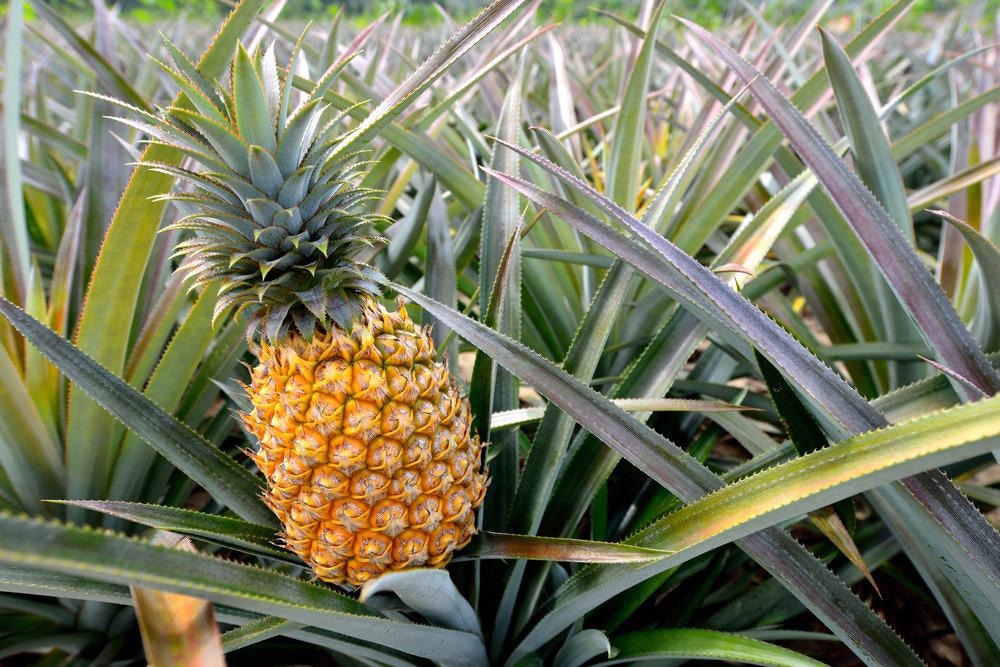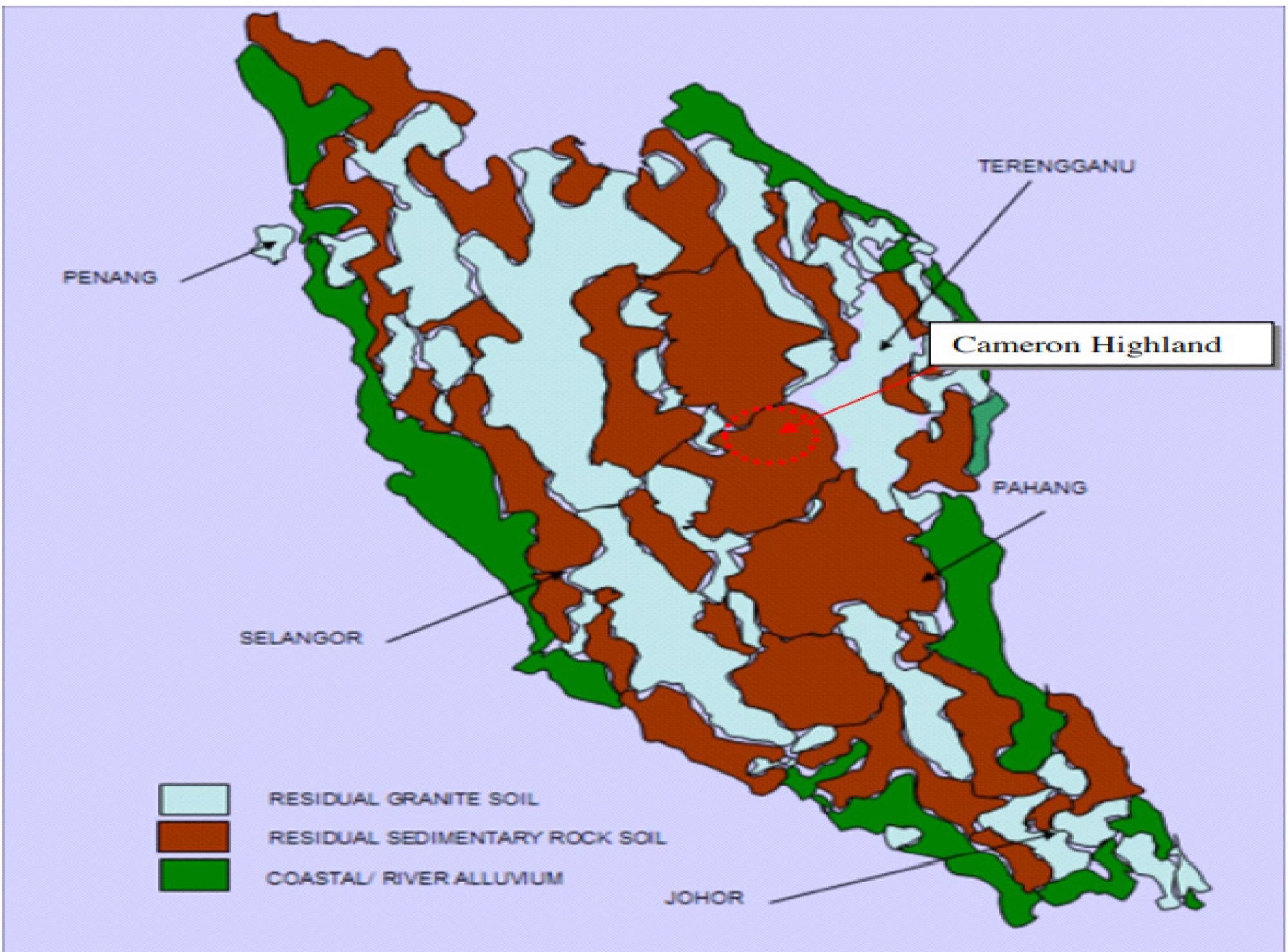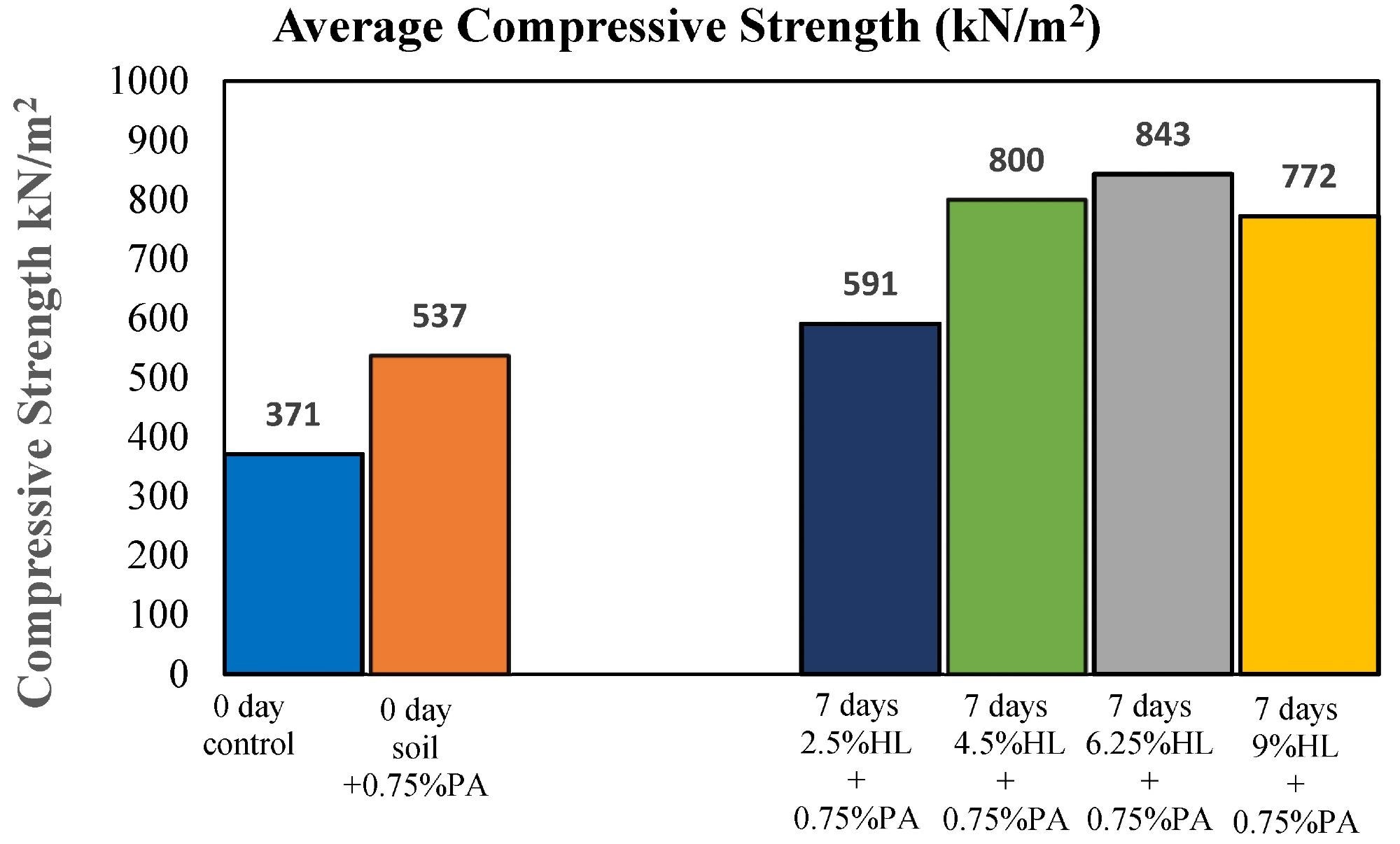Researchers from three universities in Malaysia have collaborated on a paper investigating the effects of a mixture of pineapple fiber and hydrated lime on the compressive strength of granitic residual soil. Their findings have been published online this week in the journal Sustainability.

Study: Compressive Strength of Stabilised Granitic Residual Soil Using Mixture of Pineapple Fibre—Hydrated Lime. Image Credit: 9comeback/Shutterstock.com
Granitic Soils
Granitic residual soils are present in all parts of the world, but especially in tropical areas. These soils are formed from the weathered residue of rocks, and whilst they are widespread, they are difficult to use in construction. This is due to variance in properties in different geographical locales and lack of saturation in granitic soils, which makes them susceptible to volume change and deformation.

Malaysia map with the distribution of GRS. Image Credit: Yusuf, Z.M et al., Sustainability
Granitic residual soils contain a high sand content and low clay content. These soils are classed as having a high intermediate plasticity index of between 9.9% and 11.99%. Several studies have been performed to elucidate the geotechnical properties of granitic soils. These include specific gravity, moisture content, soil shear strength, and particle size distribution.
Granitic soils possess a high void ratio between soil particles, which, due to the aforementioned deformation and volume change, makes building materials that use these soils prone to failure or foundation damage. Diverse soil composition and difficulty in obtaining good quality samples make determining the strength of these soils problematic. Unsaturated granitic residual soils generally exist above the level of groundwater. In tropical areas, where they are abundant, structures typically use granitic residual soil, leading to problems with buildings.
Improving Soil with Additives
Soil properties can be improved with the use of chemical additives. Lime, bitumen, cement, and fly ash are used to stabilize soils before construction commences. Based on the results of research, hydrated lime has been proposed as a suitable chemical additive to improve soils. This additive provides calcium ions, which are essential for soil stabilization, although the effectiveness can vary between different soils based on the mode of reaction in the presence of water.
Hydrated lime can improve the compaction characteristics of graphitic residual soils, as well as increase their workability and strength. Additionally, its use can decrease plasticity and swelling/shrinkage capacities of treated soils. Lime provides calcium ions and improves the chemical stability of soils. Further reinforcement of the soil occurs due to binding between silicates, aluminates and clay particles.

Pineapple fibre. Image Credit: Yusuf, Z.M et al., Sustainability
Pineapple fiber has recently emerged as an attractive raw material for the construction industry. It has been widely explored as an alternative to synthetic fibers, possessing high strength and stiffness due to its high cellulose content. Pineapple fiber is also hydrophilic in nature. Pineapple fiber exhibits mechanical and physical properties stronger than other natural fibers, especially regarding tensile strength.
Moreover, pineapple fiber is obtained from waste materials in the agriculture and food industry, making it highly sustainable, meeting the demands of a circular economy and reducing the impact of virgin resource exploitation. Studies have highlighted its use in Malaysia and its abundance as a natural construction additive resource. Different mixtures of pineapple fiber have been evaluated for their effect on soil strength.
The Study
The study from researchers in Malaysia has investigated how different percentages of pineapple fiber and hydrated lime can improve the stability of granitic residual soils. Soil reactions were observed after the incorporation of these additives, and the authors employed a series of experimental tests to answer the research questions. Physical and unconfirmed compressive strength tests on both treated and untreated soils were performed.
The authors have stated that one of the aims of the research is to explore how the use of these additives in graphitic residual soils can help Malaysia achieve its green technology goals by balancing economic and environmental advantages. However, the main aim of the paper is to investigate how using pineapple fiber and hydrated lime as a binder influences and improves the mechanical and physical properties of graphitic residual soils.
Properties of amended soils investigated in the study were the particle size distribution, moisture content, compaction, and Atterberg limits. Pineapple fiber and hydrated lime greatly improved the treated soil’s compressive strength. Different compressive strength values were obtained with different curing times. Results demonstrated that properties such as optimum moisture content, specific gravity, compaction, and particle distribution were favorable in the treated soils.

Average UCS for all samples. Image Credit: Yusuf, Z.M et al., Sustainability
Moreover, natural fiber-based composites are abundant, sustainable, can be handled safely, and are biodegradable, making them attractive candidates as an additive for construction, improving the environmental friendliness of the industry.
Based on the results of the study, the authors have recommended further tests on hydrated lime-pineapple fiber additives with different curing lengths. Furthermore, they have recommended permeability and triaxial tests to determine the influence of parameters such as angle of friction and pore water pressure.
Further Reading
Yusuf, Z.M et al. (2022) Compressive Strength of Stabilised Granitic Residual Soil Using Mixture of Pineapple Fibre—Hydrated Lime [online] Sustainability 14(7) 3826 | mdpi.com. Available at: https://www.mdpi.com/2071-1050/14/7/3826
Disclaimer: The views expressed here are those of the author expressed in their private capacity and do not necessarily represent the views of AZoM.com Limited T/A AZoNetwork the owner and operator of this website. This disclaimer forms part of the Terms and conditions of use of this website.